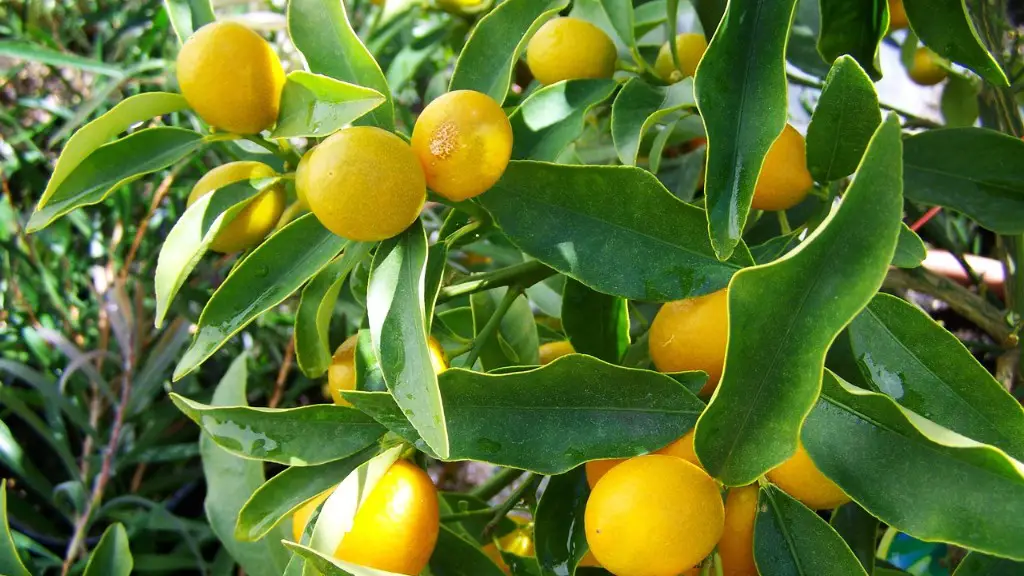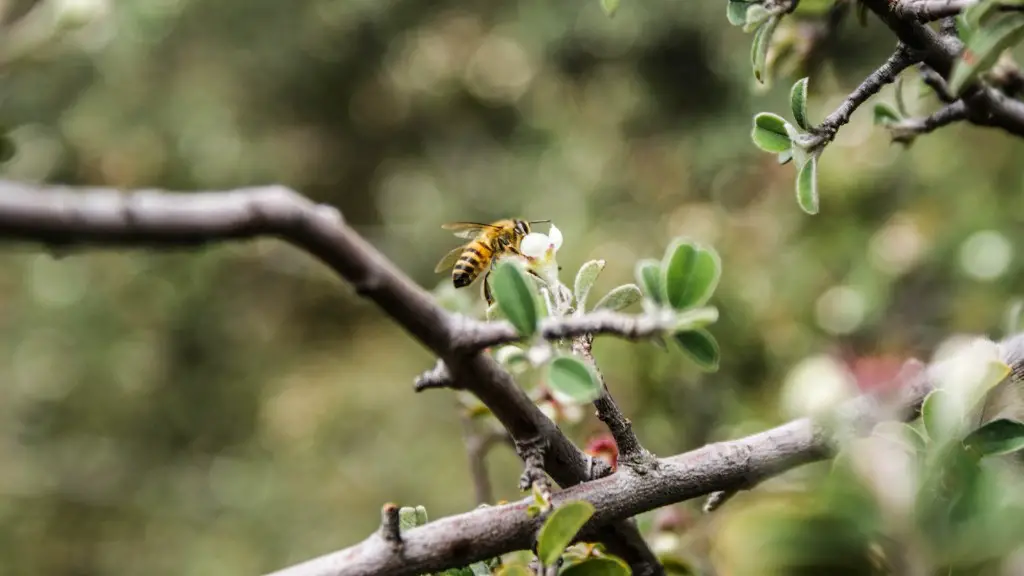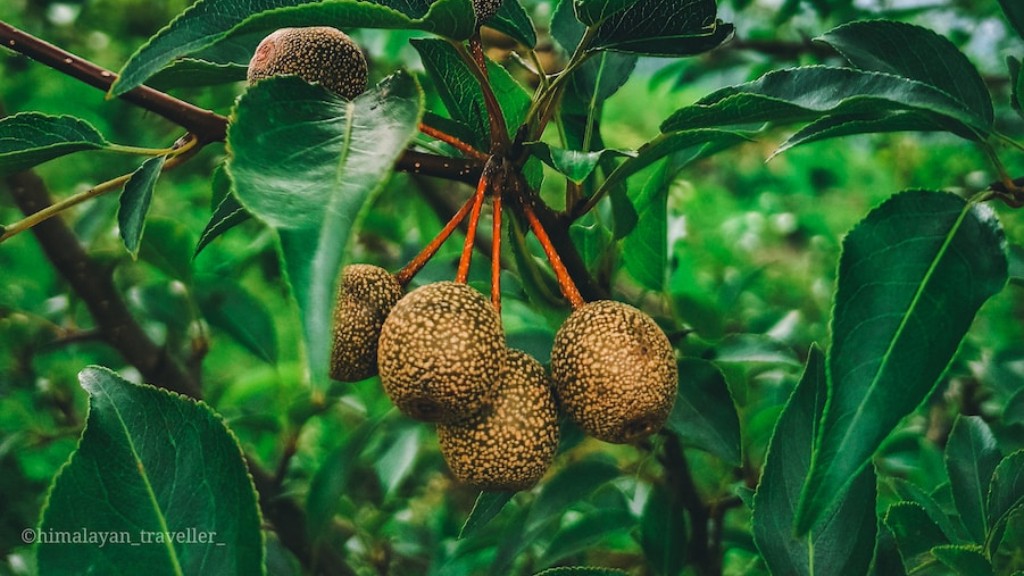As the summer heats up and we start to move into the outdoor growing season, it’s the perfect time to look at planting an avocado tree in the soil. Avocado trees can offer rich rewards such as year-round blooms, delicious and nutritious fruits, as well as a sense of pride in growing your own food. To ensure success, there are a few simple steps to follow when it comes to planting an avocado tree.
The first step to planting an avocado tree is to choose the right variety. There are two main types of avocado trees- Mexican avocados and the Haas variety. Mexican avocados are considered to be the most cold-resistant and popular of the two. The Haas variety is best suited for those in tropical or sub-tropical regions, as they tend to be more sensitive to cold temperatures.
The second step is to choose a planting site. Choose a spot which offers plenty of sunlight and good drainage. Avocado trees thrive in a sun-filled spot but can handle a bit of shade, especially during the midday heat. Additionally, be sure to provide enough space to accommodate the size of the mature tree.
The third step is to prepare the soil. The ideal soil for an avocado tree is one with a pH between 6.0 and 7.0. Soil that is too acidic or alkaline can lead to stunted, yellowed leaves and poor fruit production. Adding compost to the soil will help to balance out the nutrients and provide additional moisture.
The fourth step is to plant the tree. Planting an avocado tree in the soil is relatively easy. Dig a hole that is twice as wide as the root ball of the tree. Place the tree in the hole and hold the root ball in place with one hand while the other hand is used to cover the roots with soil. Be sure to tamp down the soil to remove any air pockets.
The fifth step is to water the tree and mulch around it. All newly planted trees, including avocado trees, need to be watered thoroughly. A slow gentle trickle of water is best, as this will help to settle the root ball and eliminate any air pockets. Mulching is also recommended, to help retain moisture in the soil and discourage weeds.
The sixth step is to stake the tree. Staking the tree will help to support it as it grows, and will help to keep it upright in windy conditions. A simple stake that is about the same height as the trunk of the tree can be used, or a more elaborate trellis system can be built.
The last step is to continue to care for the tree. Avocado trees need to be watered regularly and fertilized with a balanced fertilizer every three months. Pruning should be done in the spring to keep the tree healthy and to encourage fruit production. Taking these steps will help ensure that you have a thriving and fruitful avocado tree.
Featuring a Variety of Avocado Trees
When it comes to growing avocados, there is an endless variety to choose from. The most popular varieties are the Mexican avocados, such as the Hass and Fuerte, as well as the Florida varieties such as the Booth and Pinkerton. Each variety varies in size, color, flavor and texture, so it is a good idea to research which variety is best suited for your particular area.
Mature trees of some varieties can reach heights of up to 60 feet, so it is important to be prepared for the size of the tree when selecting a variety. Additionally, some varieties are more cold-sensitive than others, and should be planted in more sheltered locations. Keeping these factors in mind will help to ensure that the plant you select is the right one for your particular environment.
A great way to find out more about the various varieties of avocado trees is to visit your local nursery or garden center. They will be able to provide you with the necessary information to make an informed decision. You can also purchase the tree directly from them, thus saving you time and eliminating any potential for errors.
When it comes to selecting an avocado tree, it’s important to remember that each has its own special characteristics which will affect its growth and success. Research is key to finding the perfect tree for your needs, so don’t be afraid to ask questions and seek out advice from the experts!
Proper Pruning and Nutrient Care Instructions
Pruning is an essential part of maintaining an avocado tree, and it can help to increase the health and productivity of the tree. Pruning should be done in the spring, when the tree is in its dormant stage. Pruning helps to remove any dead or diseased branches, encourages productive branches, and improves the overall structure of the tree. It is also important to prune the tree in order to promote fruit production.
In addition to pruning, it is important to provide the tree with the necessary nutrients to ensure that it reaches its full potential. Fertilizing the soil with a balanced fertilizer every three months will help to maintain the health and productivity of the tree, while also encouraging fruit production. Also, avoid over-watering the tree, as this can cause the roots to be waterlogged and reduce fruit production.
By following these important steps, an avocado tree can be a rewarding experience for any gardener who is willing to put in the time and effort. Providing the tree with the necessary care and nurturing will ensure that it grows to its fullest potential and produces an abundance of delicious fruit year after year.
Important Considerations for Growing Avocado Trees
There are a few important considerations to keep in mind when growing avocado trees. First, the tree needs plenty of sunlight. Although it can tolerate some shade, it should be planted in a location that receives at least 6 hours of direct sunlight per day. Additionally, it is important to provide enough room for the tree to grow and produce fruit. Avocado trees can reach heights of up to 60 feet, so be sure to provide enough space to accommodate this.
Another important consideration is soil. Avocado trees need well-draining soil and prefer soil with a pH of between 6.0 and 7.0. To ensure that the soil is optimal for the tree, it is important to check the pH level and amend the soil if necessary. Compost is an excellent amendment to use, as it helps to balance the pH level of the soil and add in essential nutrients.
Finally, it is important to be sure that the tree is watered correctly. Watering an avocado tree can be tricky, as it requires a delicate balance of providing sufficient moisture while avoiding soggy soil. The best way to tell if a tree is receiving enough water is to check the top 3-4 inches of soil for moisture. If the soil is dry, then it is time to water the tree.
Common Pests, Diseases, and Solutions
Avocado trees are susceptible to a variety of pests and diseases. Common pests include aphids, mealybugs, and scale insects. These pests feed on the sap of the avocado tree and can cause damage to the foliage and fruit. These pests should be controlled using horticultural oil, insecticidal soaps, or other natural pest control methods.
The most common diseases affecting avocado trees include anthracnose, root rot, and blight. Anthracnose is caused by a fungus and can cause leaf spot and twig dieback. Root rot is caused by a combination of waterlogged soil and a lack of oxygen. Finally, blight is caused by a fungus and can cause leaves to yellow and droop. The best way to prevent and treat these diseases is by providing the tree with the necessary care and by providing adequate drainage.
Avocado trees can offer a rewarding experience for any gardener who is willing to take the time to provide the tree with the required care. Taking the necessary steps when it comes to choosing the right variety, planting it in the right location, and providing proper care will ensure that it lives up to its potential and provides you with delicious, nutritious fruit year after year.
Developing Strategies to Combat Weed Infestations
Weeds are the enemy of any gardener, and can quickly overtake an avocado tree if left unchecked. Mulching around the base of the tree can help to discourage weed growth, as can regular hand-pulling of any weeds that pop up. Additionally, applying a pre-emergent weed control such as corn gluten meal can help to prevent weed seeds from germinating.
Another effective way to prevent weed growth is to use plastic ground covers or black plastic over the soil. Placing the plastic over the soil can help to discourage weeds from growing by blocking out the light. Additionally, the plastic will help to maintain the moisture levels in the soil and discourage weed growth.
Weed infestations can quickly take over an avocado tree, so it is important to be vigilant and take action quickly. By employing a combination of these strategies, you can help to ensure that your tree is weed-free and able to thrive.
Maximizing Avocado Fruit Production
Maximizing fruit production from an avocado tree is a matter of providing the tree with the necessary care and environment to thrive. The tree needs plenty of sunlight, adequate drainage, and regular feeding and pruning. Additionally, it is important to keep the tree free from disease and pests, and to monitor the soil conditions and pH level.
Fruit production can also be enhanced by providing the right pollinators and supplemental irrigation during dry spells. Avocado trees rely on a variety of pollinators, including bees and other beneficial insects, to help spread the pollen and ensure that pollination is successful. Additionally, supplemental irrigation in times of drought can help to ensure that the tree gets enough water and that the fruit is of good quality.
By taking the necessary steps to maximize fruit production from an avocado tree, it is possible to reap the rewards of your labor with an abundant harvest of delicious and nutritious fruit. With proper care and attention, an avocado tree can provide years of enjoyment and delicious avocados for the whole family to enjoy.




